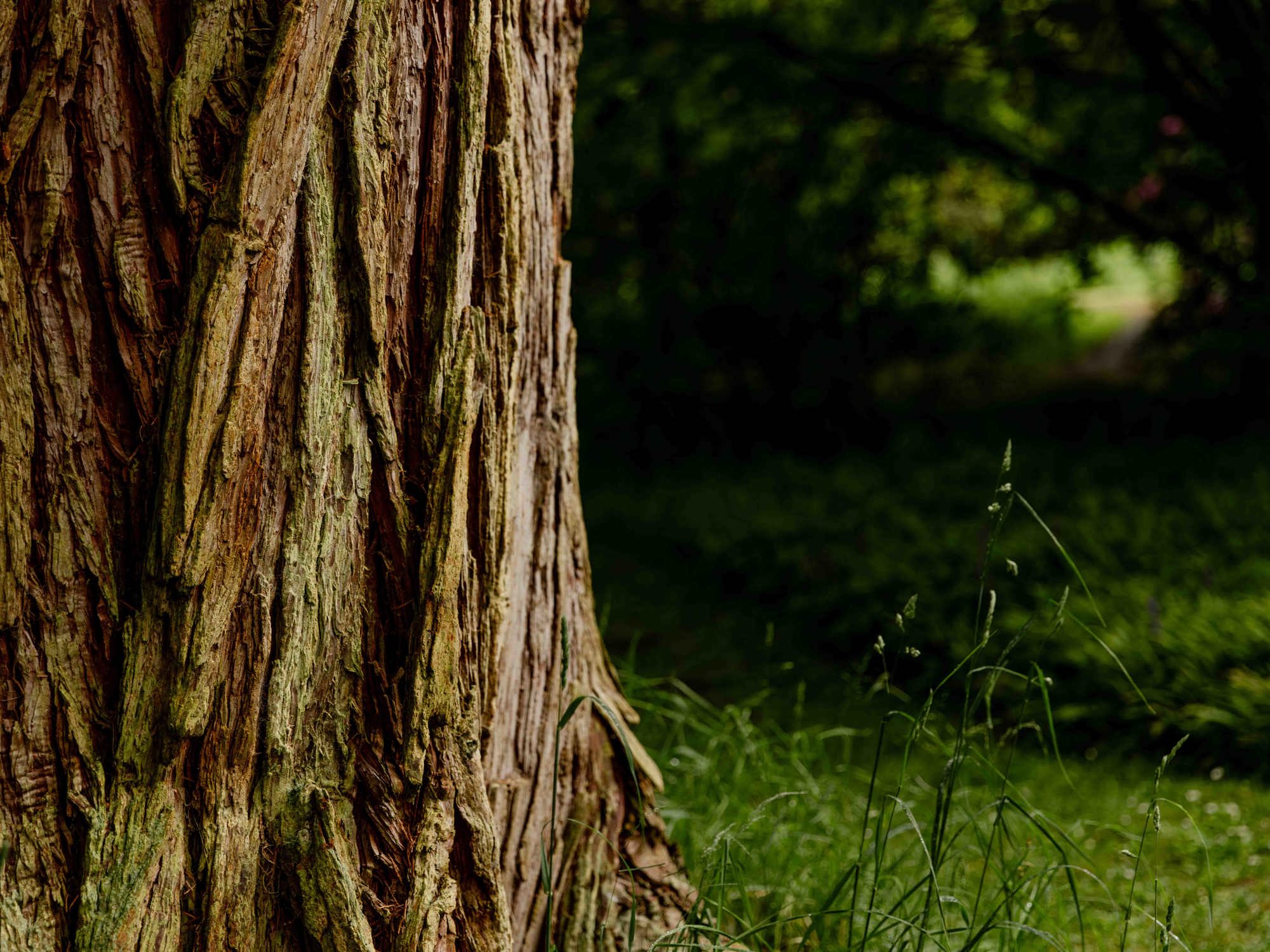Conservation of large trees not only helps mitigate against climate change, it supports indigenous people and iconic African wildlife, according to new research by scientists from Scotland, the USA and Republic of Congo, published today (Tuesday, April 20).
Research based on the Congo’s Nouabalé-Ndoki National Park brings new light to the important role enormous trees play in the global ecosystem. Now documented as both larger and more diverse than previously recorded, they are recognised for their efficiency in removing carbon from the atmosphere and supporting local human and animal populations.
Explaining the findings of the paper, *Large trees in tropical rain forests require big plots, Dr David Harris, of the Royal Botanic Garden Edinburgh (RBGE), said: “Large trees, towering over the land for generations, have always provoked awe. However, there is now a growing awareness of their importance in our future on this planet.
“Conserving our largest trees helps in the fight against the twin global challenges of climate change and species extinction. Not only do they capture carbon, an important factor in mitigating against rising carbon dioxide levels, but they are also vital to the wellbeing of local people. Almost half of the trees we found provided nutrients from oil-rich seeds and honey to edible caterpillars and symbiotic fungi.”
Dr Sydney T. Ndolo Ebika, Faculty of Sciences and Techniques, Marien Ngouabi University, Brazzaville, the Republic of Congo, a co-author in this study asaid: “The Congo Basin is home to large mammals such as forest elephants, western lowland gorillas and chimpanzees. These ‘megafauna’ or large animals rely on the largest trees for food, shelter and protection, so the protection and conservation of these big forest trees is crucial to the survival of these iconic species.”
The study took place in the Nouabalé-Ndoki National Park (NNNP), part of the Sangha Trinational that was declared a UNESCO Natural World Heritage site in 2012.
While previous research examined trees in plots of only one hectare in size, this ambitious study widened the scope of the research to thirteen plots, each of which was 10 hectares in size. The scientists found more than one hundred species of trees greater than eighty centimetres in diameter, the most abundant of which was the Sapele tree (Entandrophragma cylindricum). The Sapele, used in global timber markets as an alternative to mahogany, is now listed as Vulnerable by the International Union for the Conservation of Nature (IUCN).
David B. Morgan, the Goualougo Great Ape Project, Wildlife, Conservation Society (Congo program), Brazzaville, Republic of Congo, a co-author in this study concluded: “The wellbeing of wildlife, forests and local human populations are inextricably linked in the forests of northern Congo and long-term research studies like this one are critical for identifying threats and developing policies to address them.”
The global scientific community has started to recognise the importance of big trees in a healthy ecosystem, but there is still so much more to learn about their effects on our planet. This new study provides new evidence of the importance of these giants of our forests and the vital importance of protecting our protectors.
ENDS
For further information, interviews, review copies or images, please respond to this email or contact Suzie Huggins on 0783 774 5007 or Shauna Hay on 07824 529 028.
EDITOR’S NOTES
The research article ‘Large trees in tropical rain forests require big plots’ was published in Plants, People, Planet. The authors were:
- Dr David J. Harris, Herbarium Curator and Deputy Director of Science, the Royal Botanic Garden Edinburgh
- Dr Sydney T. Ndolo Ebika, Faculty of Sciences and Techniques, Marien Ngouabi University, Brazzaville, Republic of Congo and Initiative for Mushrooms and Plants of Congo, Brazzaville, Republic of Cong
- Dr Crickette M. Sanz, Department of Anthropology, Washington University, Saint Louis, MO, USA
- Mady P.N. Madingou, École Nationale Supérieure, Laboratoire de Géomatique et d'Écologie tropicale Appliquée, Marien Ngouabi University, Brazzaville, Republic of Congo and Lester E Fisher Center for the Study and Conservation of Apes, Chicago, IL, USA
- David B. Morgan, Lester E Fisher Center for the Study and Conservation of Apes, Chicago, IL, USA and Goualougo Great Ape Project, Wildlife, Conservation Society (Congo program), Brazzaville, Republic of Congo.
Nouabalé-Ndoki National Park - The research took place in the Nouabalé-Ndoki National Park (NNNP) and the Kabo Forestry Concession that forms the southern border of the park in the north of the Republic of Congo . The NNNP is part of the Sangha Trinational that was declared a UNESCO Natural World Heritage Site in 2012. It is formed by a transborder series of protected areas in the Republic of Congo, Cameroon and Central African Republic.
The Royal Botanic Garden Edinburgh (RBGE) is a leading international research organisation delivering knowledge, education, and plant conservation action around the world. In Scotland, its four Gardens at Edinburgh, Benmore, Dawyck and Logan attract more than a million visitors each year. It operates as a Non Departmental Public Body established under the National Heritage (Scotland) Act 1985, principally funded by the Scottish Government. It is also a registered charity, managed by a Board of Trustees appointed by Ministers. Its mission is “To explore, conserve and explain the world of plants for a better future.” Learn more: www.rbge.org.uk.

